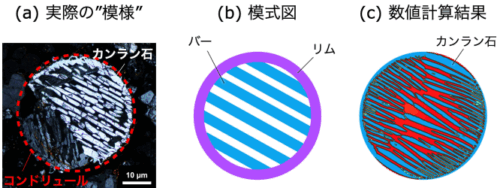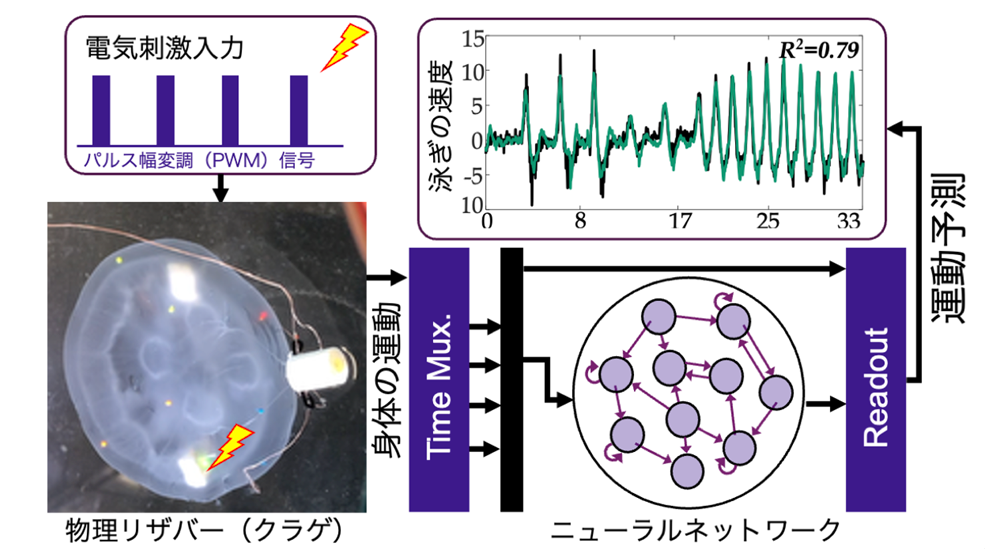2025-06-26 名古屋市⽴⼤学,東北⼤学,⽴命館⼤学,北海道⼤学

図 1︓(a)コンドリュールに含まれる棒状カンラン⽯。⽩い部分がカンラン⽯の結晶である。(b)棒状カンラン⽯の模式図。コンドリュール周囲を取り巻くリムと、その内部にほぼ平⾏に並ぶ多数のバーで特徴付けられる。リムとバーは別々の結晶ではなく、単⼀の結晶である。(c)数値シミュレーションによって再現された棒状カンラン⽯に類似した結晶成⻑パターン(模様)。
<関連情報>
棒状カンラン石コンドリュールの形成を解読する: 数値再現の実現 Decoding the formation of barred olivine chondrules: Realization of numerical replication
Hitoshi Miura, Tomoyo Morita, Tomoki Nakamura, Kana Watanabe, […] , and Chihiro Koyama
Science Advances Published:23 May 2025
DOI:https://doi.org/10.1126/sciadv.adw1187
Abstract
Millimeter-sized silicate spherules embedded in primitive meteorites, namely, “chondrules,” are the primary solid component of the early solar nebula. They exhibit distinctive solidification textures, formed through rapid cooling from a molten state. The formation conditions of these textures have primarily been inferred on the basis of dynamic crystallization experiments; however, the theoretical verification of the solidification process has been largely neglected. Here, we conducted numerical simulations of the solidification of chondrule melt and successfully reproduced a crystal growth pattern resembling a typical barred olivine chondrule texture. This pattern emerged under conditions of rapid cooling, exceeding 104 kelvins hour−1, which is substantially larger than those inferred experimentally. These results suggest that theories of chondrule formation in the nebula, which have been developed based on experimental results, should be reexamined.



